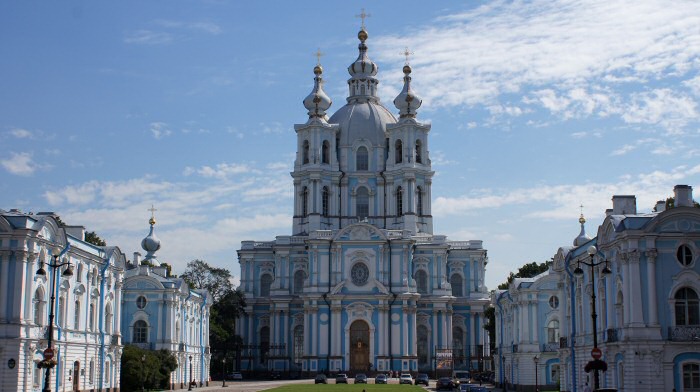
The light blue and white Smolny Cathedral in Saint Petersburg is an impressive baroque building from the middle of the 18th century.
Originally, a monastery was to be built here as a retirement home for Empress Elisabeth Petrovna (daughter of Peter the Great). The architect Francesco Bartolomeo Rastrellis (1700 - 1771, a Russian architect of Italian origin), who had also realised other famous baroque buildings in Petersburg, was commissioned with the construction. He was unable to complete the work. After the death of Elizabeth, Catherine II relieved him of all duties as Petersburg's chief architect in 1763. Catherine II disliked the Baroque style.
Catherine II, who came to power after the coup d'état against her husband Peter III, founded the "Smolny Institute for Noble Young Girls" in the unfinished convent in 1764, and the "Alexandra Institute for Bourgeois Girls" in 1765. These were the first educational institutions for women in Russia. Later, the convent buildings were used as a military hospital and a home for widows of wealthy people.
The Russian master builder Vasily Stasov completed the complex in 1832-1835, building tower churches, creating the interior of the cathedral and the enclosure. The cathedral was consecrated by the Metropolitan of St. Petersburg on St. Mary Magdalene's Day, 22 July 1835.
In 1922, all the valuables of the Smolny Cathedral were confiscated, and a year later the cathedral was closed. During the Soviet period, the Smolny Cathedral served as a warehouse for grain, fruit and vegetables, and later it was used to store stage sets.
In 1971, the cathedral was handed over to the Museum of the History of the City. It was renovated and restored and became the state concert and exhibition hall "Smolny Cathedral".
The interior of the Smolny Cathedral amazes with its absolute simplicity, not the slightest trace of
ornamentation and stucco.
